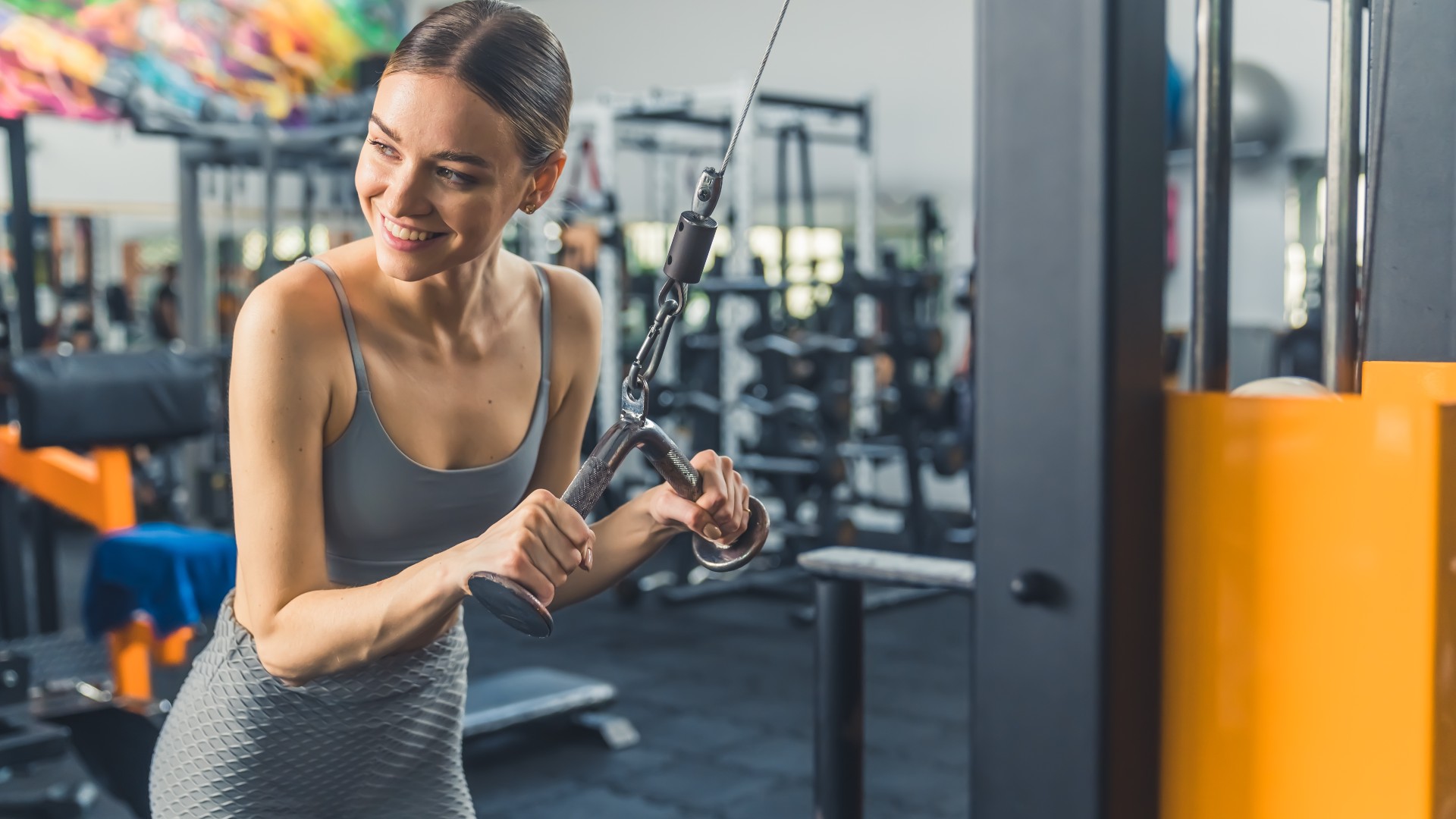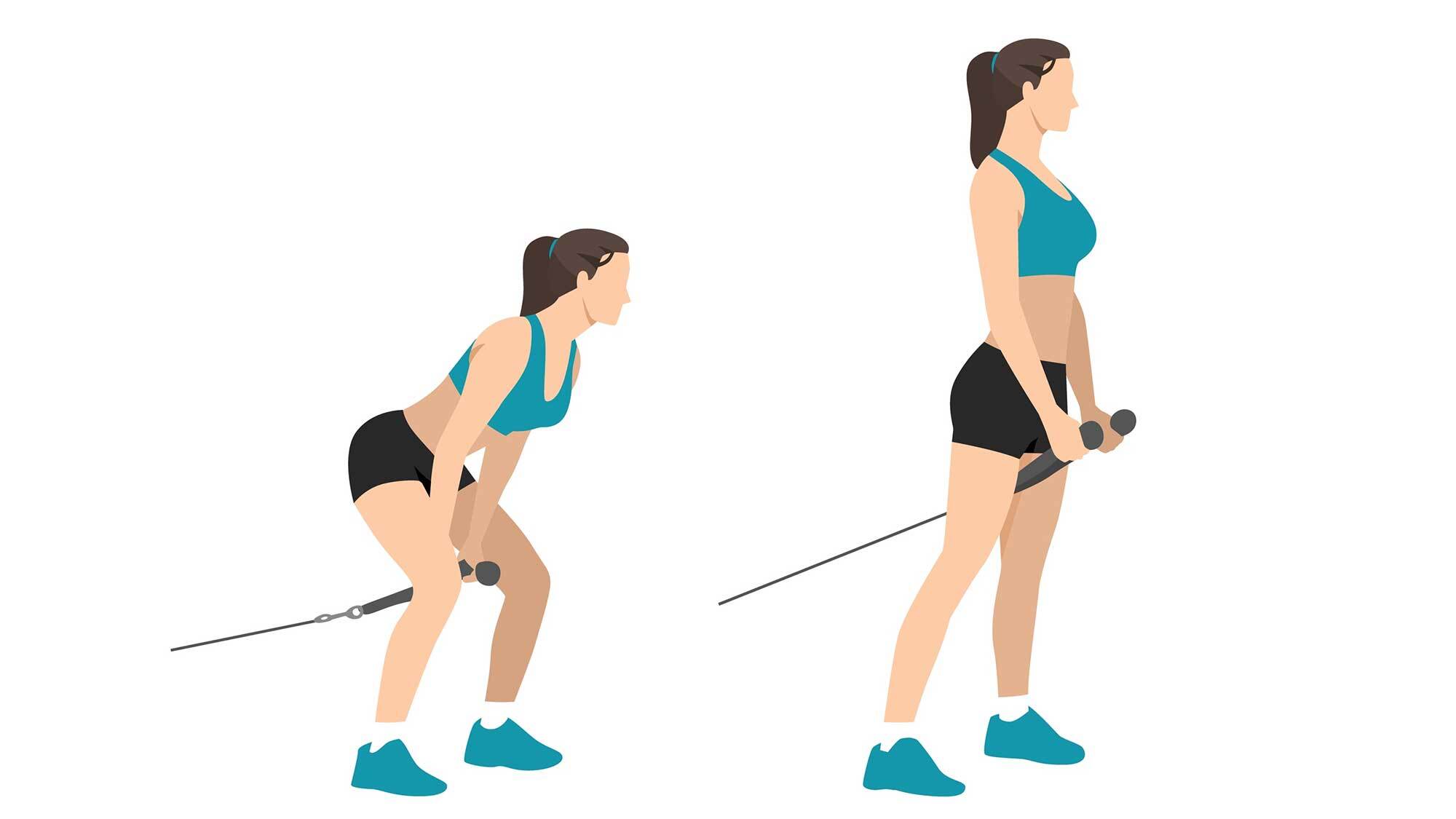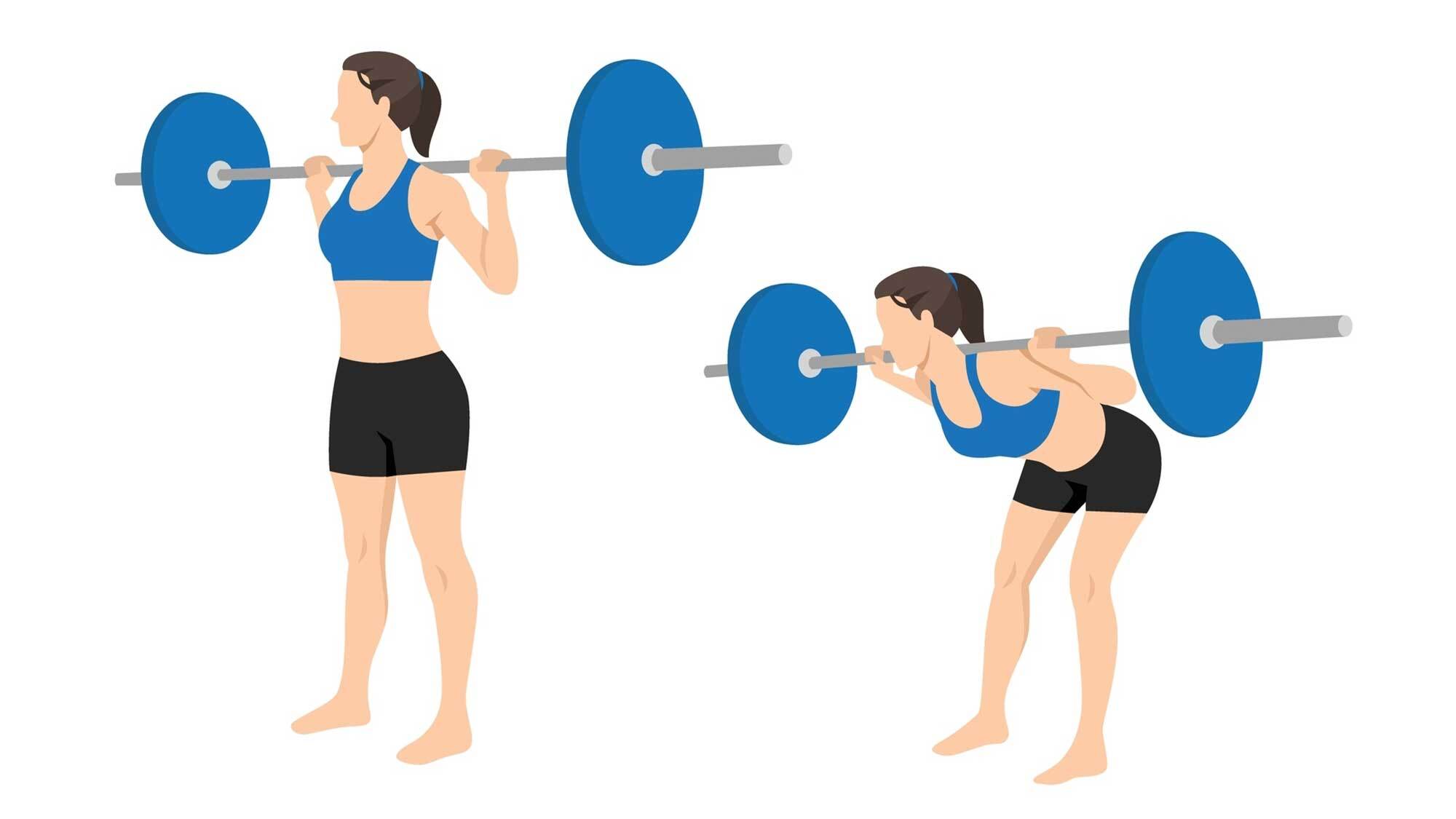
Quad-dominant exercises always pull focus, so I decided to do 80 cable pull throughs every day for a week to give my hamstrings and glutes a grilling. If you’re well-versed in exercises like the pull through, Good Morning, or Romanian deadlift, you might sympathize with this one.
Your hamstrings and glutes engage during exercises like squats and lunges, but cable pull throughs focus primarily on strengthening and sculpting them. You can perform a pull through using some of the best adjustable dumbbells and resistance bands, but my favorite technique is the cable pull through because you can scale difficulty with more stability and control.
Moreover, the cable pull through works your posterior chain — the muscles down the back of your body — including your lower back and core muscles, which can also help you nail down the queen of compound exercises — your deadlift technique. If you’re looking for other ways to punish (I mean challenge) yourself on leg day, find out how our fitness editor coped with 50 hamstring curls a day for a week, or read on to see how my legs fared when I tried 80 cable pull throughs every day for a week.
How to do a cable pull through

The cable pull through is a hip extension exercise, which means you will perform a forward thrust with your hips with a little bend in your knees. Hip hinge exercises challenge your posterior chain and core stability and are brilliant at engaging your glutes and hamstrings.
Cable pull throughs are kinder on your lower back and help build strength, but if you suffer from back pain, you can sub in a resistance band or light dumbbell. And always check in with a qualified health professional before undertaking a new exercise.
- Set up your cable pulley machine with a tricep rope attachment
- Stand with your feet slightly wider than shoulder-width apart and face away from the cable machine
- Gripping the rope in both hands between your legs, engage your core, maintain a soft bend in your knees, then set your shoulders down
- Take a few steps forward, then send your hips and the rope backward (just like a Romanian deadlift) so that your chest is parallel to the floor and your hamstrings engage
- Pause, then thrust your hips forward to stand up straight, driving the rope through your legs and squeezing your glutes
- Control the movement backward, allowing the driver to be your hips and maintain a neutral spine.
Cable pull through vs Good Morning
The cable pull through and Good Morning both start from standing and use the same movement pattern. They also target the same muscles, but with one key difference — load. Cable pull throughs are less stressful on the lower back because of the handle positioning, whereas a Good Morning loads weight onto your upper back and shoulders which requires more core engagement, control, and skill.
A pull through is a great way to practice your hip hinge skills and can help build up to variations like the barbell Good Morning, heavy deadlifts, or even kettlebell swings. It’s also easier to maintain a neutral spine, unlike lifting from the floor or loading weight onto your back, and it’s relatively easy to learn. If you suffer from tight hamstrings, both exercises can improve mobility, but load with caution!
Sign up to get the BEST of Tom's Guide direct to your inbox.
Get instant access to breaking news, the hottest reviews, great deals and helpful tips.


I did 80 cable pull throughs every day for a week — here’s what happened to my legs
I decided to challenge my lower body strength. Here’s what happened when I did 80 cable pull throughs every day for a week.
Days 1 and 2: I couldn’t climb the stairs
Great start. I divvied this challenge into 4 sets of 20 reps using a tricep rope attachment on the cable pulley to improve grip. The approach veers more towards endurance weight training (high reps for 2-4 sets) than typical “muscle building” hypertrophy, but although it didn’t feel arduous at the time — it did the next day.
I think I nailed it with the midrange weight, and I preferred working for fewer sets at higher reps as I felt my glutes, core, and hamstrings getting a good stretch and working hard to fatigue. I’ve wobbled (and even genuinely crawled) away from leg day workouts on several occasions, but climbing the stairs has never felt so eventful this time around.
Days 3 to 5: my hamstring mobility improved
Cable pull throughs challenge your hamstring mobility, so you will feel a stretch down the backs of your legs as you send your hips backward. I’m lucky enough to have ample flexibility in my hamstrings but I noticed (despite the savage DOMS) that my mobility was incrementally improving (in other exercises, too), my hamstrings felt stronger, and I could build up more weight.
If you experience tightness in your hamstrings, you might find it hard to achieve a good range of motion, but there’s a protective reason for this and a way to improve.
Research has shown that you have a stretch reflex that prevents you from overstretching and injuring yourself. It’s basically a neuromuscular signal that generates an automatic contraction of your muscle in response to a muscle lengthening: this will naturally limit your range of motion, especially if your muscles are already tight. If you’ve ever held a passive stretch before, you can recognize it by a subtle shaking feeling.
Training your stretch reflex during strength training is key. The result? Better flexibility, movement efficiency, and muscle engagement. If you struggle with cable pull throughs, try holding a hamstring stretch for 15 seconds or more. At this point, your Golgi Tendon Organs (GTOs) can sense muscle tension and overload and will “override” your muscle spindles, allowing your muscle to relax safely, and deepen the stretch.
Doing this regularly, over time, alongside strength training should help you achieve more depth. You can also give these stretches a go if you suffer from hip flexor pain.
Days 6 and 7: too many reps
Shock. Like all my challenges, I set my rep ranges as high as my hopes. But while I could feel my hamstrings and glutes getting stronger, my legs were starting to feel stiff and overworked. I don’t recommend over-exercising one muscle group, especially every day, and I started to get bored.
Luckily, I didn’t experience any injuries, although my back was a bit sore. Rather than localized lower back pain, I could tell this was because my back muscles were engaged during the exercise, namely, the erector spinae (the deep spine stabilizing muscles that hug the spine) which work hard during cable pull throughs.
I could feel this exercise everywhere the next day — and my hamstrings even felt more defined to the touch.
More from Tom's Guide
- This 7-minute glutes workout is a peach grower and works well as a warm-up
- Our fitness editor did 100 kettlebell swings for a week
- One writer tried 30 good mornings every day for a week.

Sam Hopes is a level 3 qualified trainer, level 2 reiki practitioner and senior fitness writer at Tom's Guide. She is also currently undertaking her Yoga For Athletes training course. Sam has written for various fitness brands and websites over the years and has experience across brands at Future such as Live Science, Fit&Well, Coach, and T3.
Having worked with fitness studios like F45 and Virgin Active, Sam now primarily teaches outdoor bootcamps, bodyweight, calisthenics and kettlebells. She also coaches mobility and stretching-focused classes several times a week and believes that true strength comes from a holistic approach to training your body.
Sam has completed two mixed doubles Hyrox competitions in London and the Netherlands and finished her first doubles attempt in 1:11.
